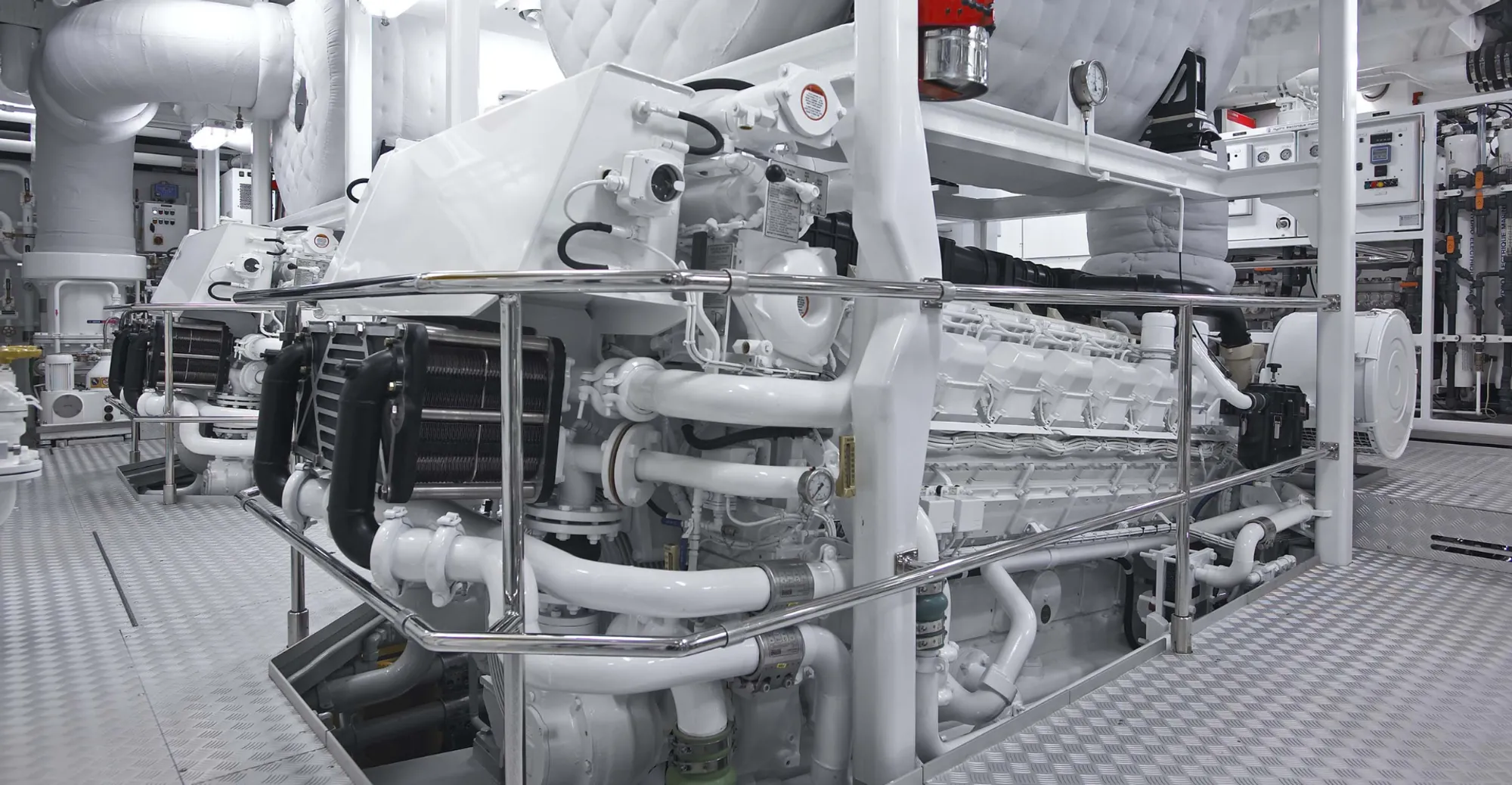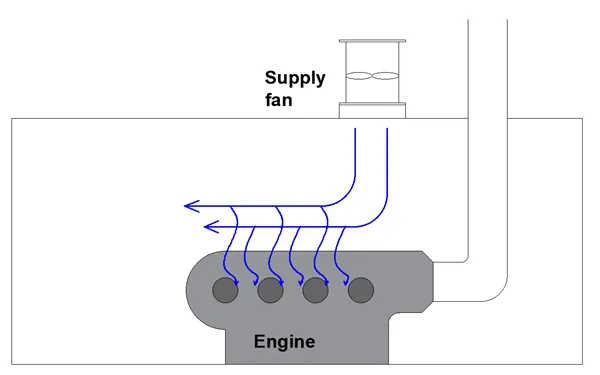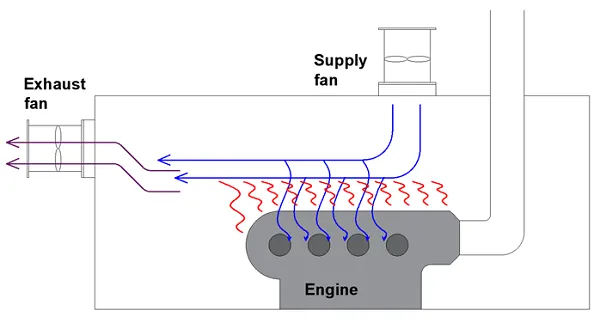
Engine room ventilation explained
Engine room ventilation explained
If the propulsion and auxiliary engines are the heart of a ship, the engine room ventilation is its lungs. A proper engine room ventilation system serves two purposes: providing sufficient oxygen for fuel combustion and cooling the room by dissipating the heat radiated from propulsion and auxiliary engines.
In this blog we dive deeper into the topic of engine room ventilation based on the following points.
- Engines need air for consumption
- Engine rooms need air to cool
- Over- and under-pressure regulation
Engines need air for consumption
How much air does an engine need? Engine manufacturers have normally already calculated the amount of air needed and specified this somewhere in their documentation. Should that not be the case you can also calculate it yourself if you know the engine power and capacity.
That information and more can be found in the ISO 8861 regarding engine room ventilation in diesel-engine ships. This states that the total airflow for combustion is the sum of all the devices in the engine room (such as propulsion engines, generators and boilers) that require fresh air.
The airflow is calculated using the following equation.

Pdg = Maximum power output [kW]
Mad = air required according to manufacturer
ρ = air density (1.13 kg/m³)
If Mad is not available, the following values may be used:
- 0.0023 kg/kW.s for 2-stroke engines
- 0.0020 kg/kW.s for 4-stroke engines

Supply fans take care of the air intake.
Engine rooms need air to cool
As well as propulsion engines, engine rooms contain other heat-emitting components such as boilers, diesel generators and major electrical equipment. The second key purpose of engine room ventilation is therefore to cool the space and remove excess heat.
According to ISO 8861, the base for the ambient outside temperature is set at 35°C with a temperature rise from the passing air of max 12.5K.
In addition to the engines themselves, the combustion air exhaust pipes also radiate heat.

The supply fans take care of the combustion air intake and also provide enough fresh outside air to dissipate. Together with exhaust fans, they create a balanced airflow through the engine room.
Over- and under-pressure regulation
Engines are not constantly running at full speed and the temperature inside the engine room also fluctuates. Ensuring control of the air supply and exhaust balance for both purposes requires a simple and reliable control system.
In essence, this is how it works. Engine room ventilation systems regulate the air flow for both pressure difference and temperature. Each engine room operates under a slight over-pressure. Say, for example, that the pressure difference between outside and in is set to 50 pascals. Turning the engines on will cause the pressure to drop, meaning the supply fan will need to bring the pressure difference to the setpoint.
The engine room system is also equipped with a temperature transmitter. When the temperature rises, the exhaust fan switches on to dissipate the heat. The pressure then drops so the supply fan turns on. This is how a good engine room ventilation system keeps the balance right.
Conclusion
The purpose of an engine room ventilation system is to supply enough fresh outside air for combustion and heat dissipation. This can involve large amounts of air, with huge fans and ducting systems dividing the air across the room.
Engine room ventilation uses outside air for cooling. According to ISO 8861 the ambient air temperature is max 35°C.
But what If you’re sailing in an area where the outside air temperature is higher? Or the other way around, cruising in an icy area with sub-zero temperatures? Other measures are required in such cases and they will be the subject of our next blog.